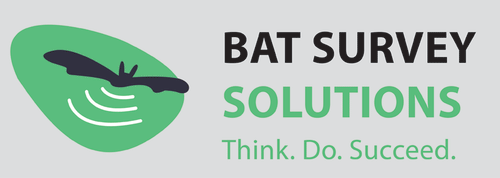Our Training Options
“There is no 'one size fits all' tool for assessing bat behavior, habitat use, occupancy, and status.”
One of the most unique features of a Bat Survey Solutions, LLC training course is the wide range of experience our staff brings to every event. This is not only in our educational and professional backgrounds, but also in our familiarity with a full range of survey equipment and protocols. Bat study is difficult and there is no “one size fits all” tool for assessing behavior, habitat use, occupancy, and status.
For biologists just starting out with bat-work who need hands-on experience with a full range of survey equipment, to seasoned professionals who desire continuing education with the latest gear, our courses provide it all.
Bat work is often a “numbers game,” and our numbers for interpreting bats are best summarized by the following:
The result is one of the most comprehensive, unbiased, and complete looks at local bats at every training venue.
Students are only limited by their desire. Instructors are dedicated to helping participants rocket-up the learning curve. Our goals are to provide you with the best value for your time, energy, effort, and dollars, that you choose to spend with us.
DATA MANAGEMENT
In a classroom setting, students learn how to organize, analyze, and report on acoustic survey efforts for bats. Class begins with the theory behind recording and analyzing ultrasonic bat vocalizations. We teach participants how to interpret quantitative analysis outputs from auto-classification software programs and how to perform qualitative analysis (i.e., manual vetting) to confirm bat species presence. Pre-recorded bat calls from regional acoustic inventories are used for hands-on analysis demonstrations. Students are also encouraged to bring in their own files to process. KaleidoscopePro and SonoBat™ software for viewing and identifying species is featured side-by-side, but we also demonstrate how to use full-spectrum *.wav files with other available programs (e.g., BCID and EchoClass).
ACOUSTIC SURVEY
During a packed schedule of combined classroom lectures, hands-on practice, and evening trips into the field, our Acoustic Survey courses teach students all the detail covered in the basic “Data Management” curriculum but also includes valuable real-world field experiences. Structured outdoor field trips at venues and times conducive for intercepting wild bats allow us to illustrate how to locate, deploy, collect, and analyze real data from active, passive, and mobile acoustic transect surveys. We continue to feature KaleidoscopePro and SonoBat™ software side-by-side for viewing and identifying species, but also include opportunities to deploy different bat detector types and/or program different recording settings to evaluate methods for conducting efficient and effective acoustic surveys.
FIELD SURVEY
Our field survey trainings provide guided, hands-on experience with bat survey methods including bat-capture with harp traps and single-, double-, and triple-high mist net sets, as well as bat-handling, removal from nets and traps, identification, banding, WNS decontamination and disinfection, COVID-sensitive field techniques, echolocation call recording, and data processing. Radio telemetry, video-recording methods, and a full range of active, passive and mobile acoustic-survey techniques are highlighted. Students learn how to integrate bat capture with acoustic monitoring for effective, efficient comprehensive bat surveys. Participants gain hands-on experience with bat detector and microphone placement, automated data collection, post processing steps, protocols for deploying acoustic transects, and methods for collecting active recordings. Students receive unparalleled opportunities to deploy and “test-drive” an impressive array of bat survey equipment, including a full range physical bat capture and recording gear available from all major manufacturers today.



